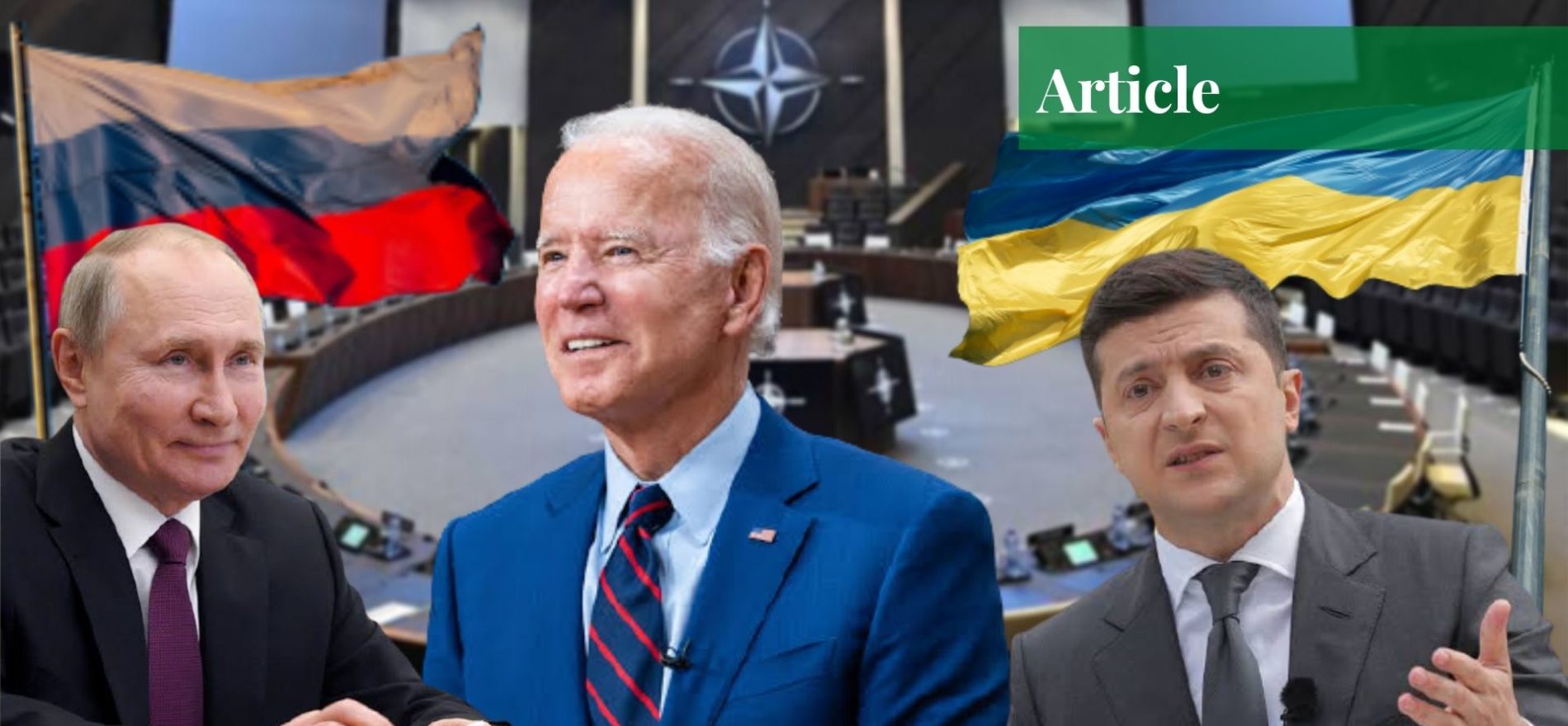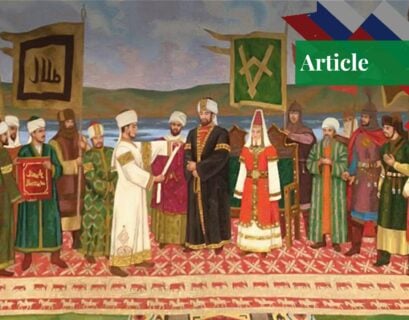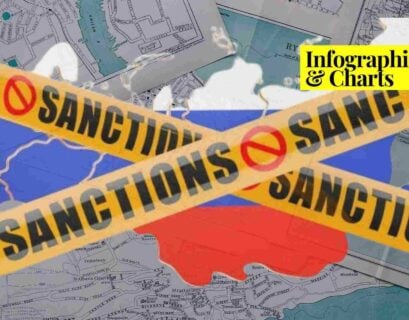Hammad Khan is a freelance writer. He has a bachelor's degree in political science from the University of Peshawar.
Root Cause of the Russia-Ukraine Conflict
Ukraine was a colony of Russia for centuries before becoming a part of the Soviet Republic. It became independent when the USSR broke up in 1991. The origins of the Russian conflict with Ukraine conflict may be traced back to a time when Ukraine, as an independent country, was moving away from the imperial legacy and became inclined towards the Western powers.

President Viktor Yanukovych desired soft policies with Russia in 2014 and rejected an association agreement with the European Union that resulted in widespread protests. Consequently, the protest led to his ouster, and Russia, in response, annexed Ukraine’s Crimean Peninsula. Russia is suspected of actively aiding separatist organizations and insurgents in Ukraine’s east. The West and Ukraine accused Moscow of arming and training the separatists, but Moscow refuted the allegations, claiming that the separatists were volunteers.
Furthermore, about 14,000 people have died in the industrial hub of Ukraine’s east, known as Donbas. Large-scale fighting was brought to a halt by a 2015 peace accord mediated by France and Germany, but efforts to establish a political settlement were unsuccessful, and sporadic skirmishes remained along the strained Russia-Ukraine border area.
The Russian conflict with Ukraine has gotten worst since the beginning of this year due to the Russian troops’ concentration near the Russia-Ukraine border and the augmented cease-fire violations in the east. However, by pulling back its troops, Moscow eased the situation.
Tensions at the Russia-Ukraine Border
According to a report by the Washington Post, obtained from the US officials and intelligence, Russia is prepared to begin an aggressive strategy against Ukraine, with an estimated 175,000 Russian forces ready to invade Ukraine next year. Ukraine claims that Russia had deployed around 90,000 troops towards its eastern border and in the Russian-annexed Crimea.
Assessing the probabilities, a large-scale engagement may ignite, even though Moscow has not made a political decision. Having said this, the activities along the Ukrainian border do not appear to be of the normal cycle. Troops have been brought back from the Caucasus and deployed along with the Western Military District.
Ukraine also asserts that about 21,000 Russian military personnel have been dispatched in eastern Ukraine to support the separatist insurgent groups but as expected, Moscow denies any such allegations. Ukraine further highlights that significant effort has been made to encourage rebels and separatist organizations in Ukraine’s eastern and southern areas, where the majority speaks Russian.
The Role of the West
The Western bloc plays a very influential role in the Russian conflict with Ukraine and the border tensions. Ukraine, for a very long time, has been interested in joining the Western bloc but the recent developments – in terms of training, weapons, and so on – have irritated Putin. President Putin is of the view that if not today, there will be NATO bases in Ukraine tomorrow, which they consider their backyard.
Although Ukraine is uncertain when it comes to becoming a formal member of the North Atlantic Treaty Organization (NATO), efforts to improve the country’s military strength are already underway. A diplomatic deadlock has also emerged since Ukrainian President Volodymyr Zelensky held a hard-and-stand stance, seeking no compromise while engaging with Moscow. The dialogue brokered through France and Germany’s help, to ease the tensions in the Russia-Ukraine conflict, is also going astray; subsequently, turning Moscow’s face towards the use of force.
What Does Russia Want?
For the Putin administration, Ukraine’s propensity towards the West is like a red rag to a bull. Moscow’s apprehensions, considering the aspirations of Ukraine to join the NATO forces, prove to be a red line for the communist state. Although the probability of Ukraine formally joining NATO is small, a considerable amount of military infrastructures are established in the territory, including military training centers and the development of weapon systems.

Russia expects to obtain security guarantees from the US and its Western allies to prevent NATO movements from further strengthening their foothold in its neighborhood. It is most probably, for this particular reason, that Russia sees war as inevitable, that there is no alternative passage for salvaging the issue.
The US believes that this is one of the provocative measures taken by Moscow to guarantee its security. Furthermore, the US blotted out the idea of Russia asking for a guarantee that Ukraine will not join NATO. In their official statement, the US officials said that NATO’s member countries decide who’s a member and who is not.
Is Putin Bluffing?
Many experts around the world believe that Putin is merely bluffing. The idea of invasion has been rejected by Russia. Besides this, Russia claims that the Ukrainians intend to attack the eastern front of Russia, something utterly denied by Ukrainian authorities. Some analysts argue that Putin’s urge for military build-up and demonstrations towards Ukraine serves the purpose of raising his stakes in inducing NATO’s respect for Moscow’s position on sending its troops into Ukraine and enhancing Ukrainian weapon systems.
According to some observers, Putin wants to highlight Russia’s stakes in terms of not getting ignored by the US and keeping Ukraine cornered to keep its western borders secured from any conflict that is not needed. Although the US and Ukraine have some other ideas concerning Putin’s administration, that’s all due to Russia’s past behavior.
According to the US and Ukraine, similar to the way Russia launched a large-scale invasion in 2014, it won’t back away from anything less than that. Ukraine’s fears have been further fueled due to Russia backing the separatist groups in the east. Many analysts have the conquest of Georgia in 2008 in the back of their minds. What if Ukraine is truly invaded? The invasion will impact about 43 million people.
Although it is deemed that many western nations would help Ukraine in terms of weaponry, no state would interfere physically through its military. The US Secretary of State, Antony Blinken, said that “the invasion would have massive consequences and costs.” The Russian administration denies this hysteria. In one of his interviews, Kremlin spokesperson Dmitri Peskov told the reporters that this hysteria was “artificially whipped up”.
The idea of an invasion seems to be one of the options that the Putin administration may explore. The invasion might cease to happen if Russia is forced to fight, but not a lot could be achieved by Russia through launching a military offensive against Ukraine. The one thing that could happen in bulk will be the collateral damage on both sides. Nonetheless, in the Russia-Ukraine conflict, the Russian administration understands that the thought of an invasion would cause immense damage to the unity and legitimacy of the country.
If you want to submit your articles and/or research papers, please check the Submissions page.
The views and opinions expressed in this article/paper are the author’s own and do not necessarily reflect the editorial position of Paradigm Shift.



















